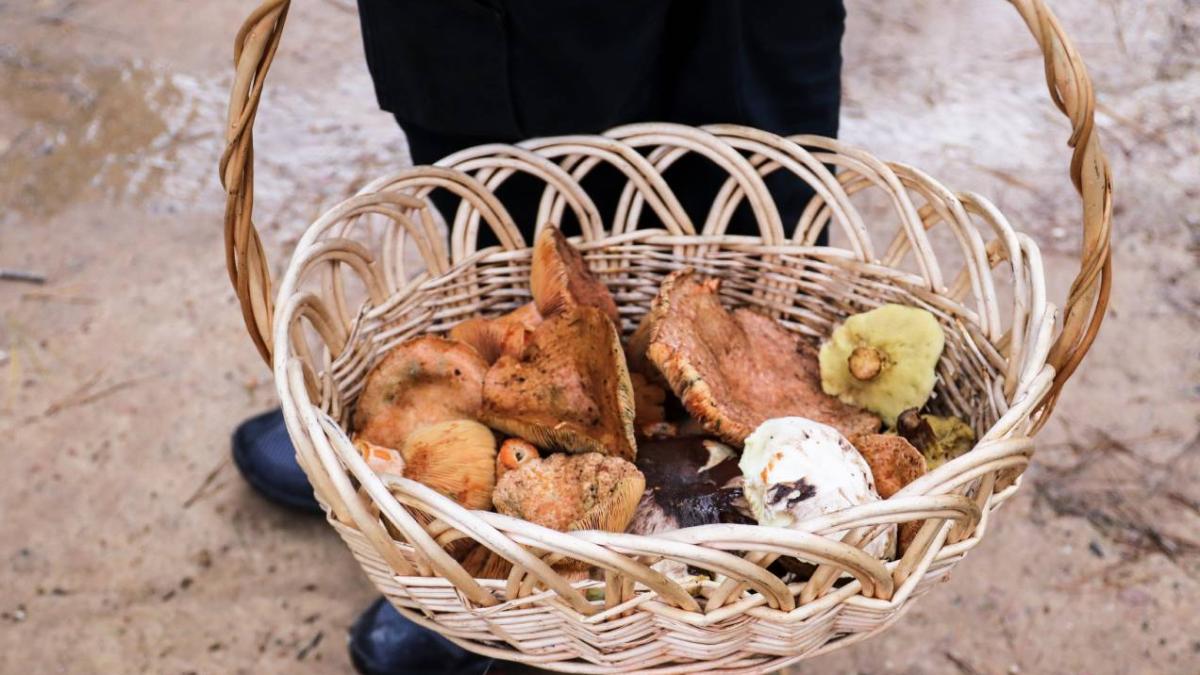
Waking up at sunrise to go and spend a freezing morning scouring a damp forest floor was not something I thought I’d do during the pandemic, but it happened and boy was it wholesome as all hell. But the one thing I learned on my first ever mushroom foraging expedition? Those backyard mushrooms shouldn’t be touched with a ten-foot pole.
On a very chilly Saturday morning in late May, a group of foraging first-timers socially-distanced around a fire while Jim Fuller and Chris McLoghlin from Fable Food Co. talked us through the ins and outs of finding mushrooms that are safe and edible in the nearby scrub.
Turns out the most trustworthy mushies are actually found in pine forests; we’d be keeping an eye out for Slippery Jacks and Saffron Milk Cups (also known as Pine Mushrooms) and definitely not the magic kind (though our handy guidebook did show us what they look like.)
Because there’s been enough research into the fungi organisms that grow underfoot in pine tree plantations and forests, you’d be pretty hard-pressed to find a nasty lookalike of these mushroom varieties. That’s the tall and short of it, really.

It’s not always been that way, though. When I was a kid I very distinctly remember my Dad going mushroom foraging in the back paddocks of the family farm. He’d come back with a bag of big cups that looked like portobello mushies, and cook them down into an inky-black mess to have on buttery toast.
Those mushies used to be one of the safest to identity and eat, but Jim told me that’s not the case anymore.
“Since there’s a widespread of fertilizers, we have had a steady increase of the other types of field mushrooms that are not tasty and appetising but cause violent stomach upsets,” he said.
“What’s worse is that for the most part, these new “yellow stainers” look generally very much like the other field mushrooms that people recall ever so fondly going out, collecting and preparing with the family to a safe and delicious feast.”

If you’re really keen to forage in a back paddock or anywhere outside of a pine forest, Jim stresses that taking someone with you who’s an expert on wild mushrooms to ID the safe ones for you.
After our big adult Easter egg hunt looking for Saffrons and Jacks, Jim showed us how to prepare our finds for eating. It also turns out I’ve been bloody cooking mushrooms wrong, too.
Mushies aren’t like vegetables, which break down into a mushed mess if you cook ’em in water for too long. Instead, mushrooms absolutely hold their shape and you can stew them for as long as you like to get a really nice umami broth going. From there, you can evaporate all the water out and begin to caramelise the mushrooms with fats and flavours.
Cooking down in the water first allows the mushroom to develop an incredible texture while holding its flavour. Those Slippery Jacks? They go exactly like marrow, or scallops when cooked down this way.

If you can’t get out foraging in the wild though, Fable Food has just unleashed its own “Slow Braised Beef” made from shiitake mushrooms at your local Woolies. I can 100% confirm it’s delicious as all hell.
So the big takeaways here? Unless you’ve got a mushie expert on speed dial or whole-ass pine forest in your backyard for mushroom foraging, don’t even think about cooking up the cups in your garden. Not unless you wanna shit yourself or something. Oh and forget just about everything you know about cooking mushrooms, that boiling-down method is a bloody gamechanger.
See ya out there for next year’s mushroom foraging season, mates. I’m obsessed now.



